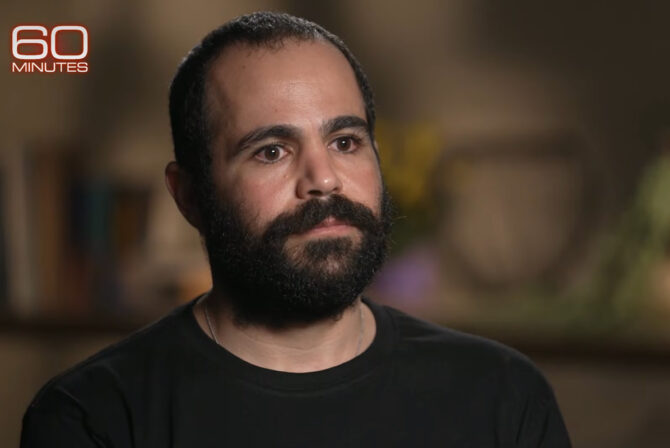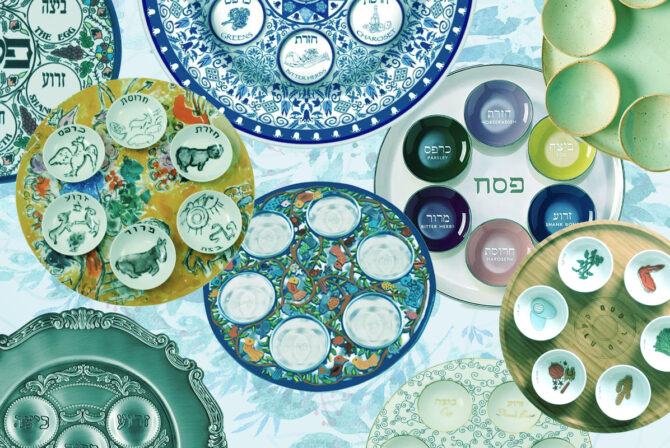I’ll admit it: My Purim costume has been hanging in my closet since right after I ordered it on Cyber Monday. Yes, that’s correct: It was just days after Thanksgiving and I was already planning for Purim. I will be dressed as “Where’s Wenda,” the feminized version of “Where’s Waldo.” My 6-year-old son requested a Darth Vader costume, so that’s what I bought him on Cyber Monday as well, and I haven’t thought about our Purim costumes since.
But now Purim is approaching and it will be time to open the packages and try on our costumes (actually, I’ve already tried mine on and ordered awesome striped tights to match!). I’m finding that—as both a rabbi and, more importantly, a Jewish mother—I now have regrets that we chose the costumes we did.
I wish I had thought to find a Queen Esther or Mordechai costume. I wish I had considered Golda Meir, Israel’s first female prime minister, or Sandy Koufax, the Jewish baseball player who refused to pitch a World Series game because it was on Yom Kippur. I know Purim night, we will greet tons of Elsas and Supermen at our synagogue, and I have to wonder if we are all missing the point of the Purim story.
Purim is a story like almost any of the Disney movies our children watch obsessively: a villain (Haman), a damsel in distress (Queen Esther), and a king who has the power to save the day (King Ahashverosh). Add the intrigue of a first queen who doesn’t listen to the king and stands up for herself (Queen Vashti) and a devoted uncle/cousin/caregiver (Mordechai), and we have a cast of characters as complex and engaging as “Beauty And The Beast.” Of course, my favorite character, Haman’s wife Zeresh, resembles the wicked stepmothers in “Snow White” and “Cinderella.” She concocts an evil plan and hisses her advice to anyone who will listen. I’m surprised she doesn’t suggest that Haman bring a poison apple to Queen Esther’s banquet!
So why do we default to princesses and superheroes? How are “Where’s Wenda” and “Darth Vader” going to make Purim more meaningful for my family? I think it is time to reframe the Purim experience for our children, and here’s how I’d like to suggest we try:
1. The beauty of silence: Queen Esther. Put on those Elsa and Belle dresses and then make a crown for a beautiful Queen Esther. In Megillat Esther, the Scroll of Esther, we read how this young maiden kept her identity secret from the king. A meaningful conversation with a young Queen Esther might be to talk about what makes her special or what she believes is important to stand up for.
2. I am strong, I am invincible, I am woman: Queen Vashti. I remember as a child how my mother would wear a leather skirt to be Queen Vashti, suggesting she was somewhat risqué. There are versions of the story that vilify Vashti for refusing to dance for the king and his friends, but I prefer to celebrate her convictions. Wear a strong woman costume—perhaps one portraying Golda Meir or Ruth Bader Ginsburg—and celebrate her sense of self and self-worth.
3. Embrace Your Inner Superhero: Mordechai. Superman, Iron Man, Spiderman, Batman, Aquaman… the heroes in our stories inspire and delight. And while Mordechai, like all superheroes, has a flaw, as he is too timid to save the Jewish people on his own and places all the responsibility on Esther, he is a leader of the Jewish people, standing up for his right to not bow down to Haman. He also saves the king’s life and does not ask for a reward, displaying great humility when he is finally rewarded. Mordechai is our superhero. He may not wear a cape like the others, but he does get to wear the king’s robe and ring and is paraded around on the king’s horse! I would love to see some Super-Mordechai’s at Purim this year!
4. Prince Charming: King Ahashverosh. A man with power and position. A restless and hopeless romantic. The king had it all and yet did not even realize the true power he had to save his beloved Queen Esther and her people. While I do not see as many Prince Charming’s as I do princesses, I would love to see a Prince Harry or “The Little Prince” or even a rapping “Fresh Prince” grace our Purim stage. Give the king a little respect (Elvis impersonator, anyone?).
5. Haman, Haman, Hey Man: Haman. Dress your child like Darth Vader or the Wicked Witch of the West and encourage a fun and safe exploration of evil in our midst. You can try to assure your child that good will triumph over evil and that we get to eat the evil guy’s ears in the form of yummy hamantaschen cookies.
6. Spread the light: The Jews. Toward the end of Megillat Esther we read a phrase stating, “The Jews had light, gladness, joy, and honor.” That is the essence of the Purim story still today. Dress up as a clown and bring joy. Be a ballerina or a ninja turtle, a cowboy or a fairy godmother. Have fun. Be happy. Purim celebrates a triumph over evil and a commitment on behalf of the Jewish people to once again accept the Jewish tradition and make it meaningful in our lives. Dress up as a Jew—the Jew you are or the Jew you’d like to be—and spread the light of Purim to others.
So whatever you decide to be for Purim, be yourself and be proud, because Purim is a time to celebrate who we are and what we have overcome as a Jewish people. Happy Purim!
Read More:
The Purim Folk Song You Didn’t Know You Needed
I’m an Orthodox Jewish Woman, But No, I Don’t Wear a Wig
My Baby Had a Seizure And I’ve Been a Mess Since







